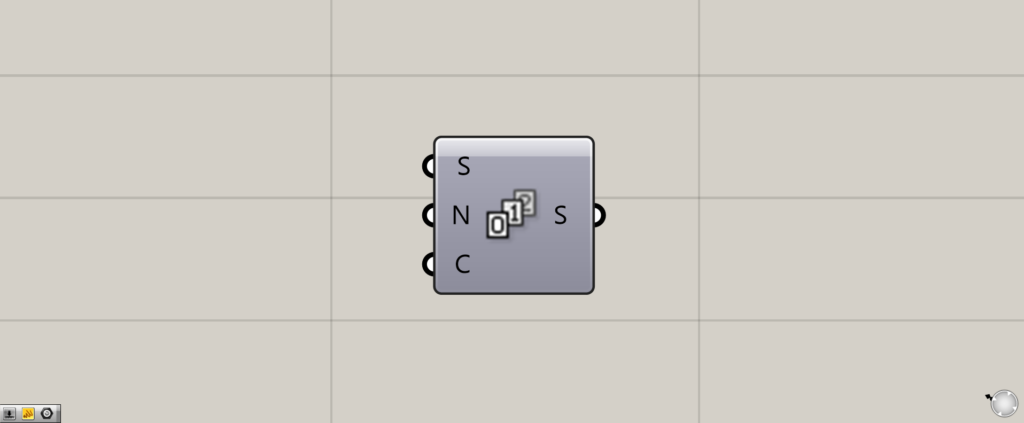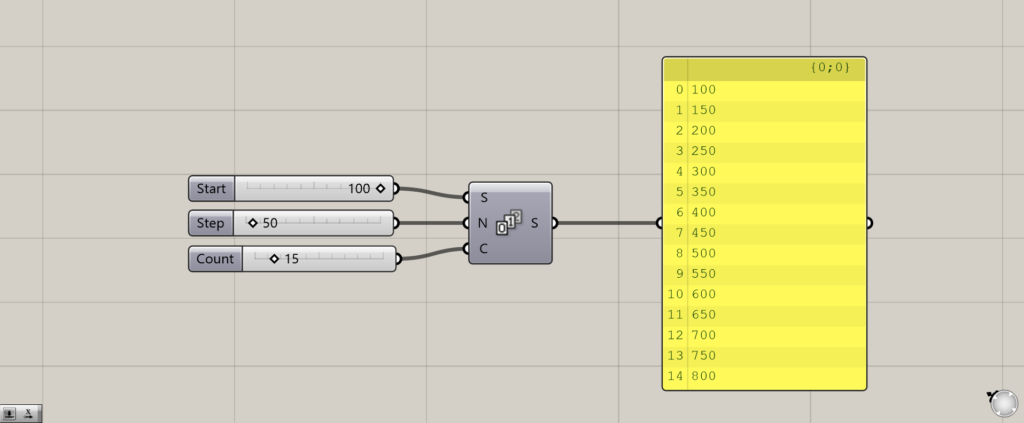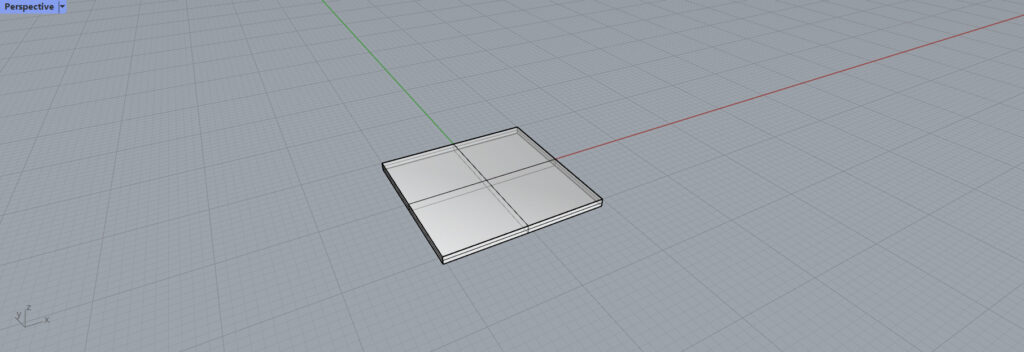This article explains how to use Series to create an arithmetic sequence.


On the Grasshopper, it is displayed as either an icon or text.
Create an Equal Difference Sequence
Series can be used to create an equi-difference series.

Enter a starting number in the Series(S).
In this case, 100 is entered.
Enter a numerical value for how much the value increases per the Series(N).
In this case, 50 is entered.
Enter the number of times to repeat in the Series(C).
In this case, 15 is entered.
The result is a sequence of numbers with an initial value of 100, increasing by 50.
The number sequence ends when the 15th number is output.
Series example

This is the data on Rhinoceros that will be used in this example.
Move this object using an arithmetic sequence in the Z-axis direction.

Components used:①Brep ②Series ③Unit Z ④Move
Connect the equi-difference sequence created in the previous Series to au Unit Z and a Move.

The result is 15 objects duplicated from a height of 100, each of which is raised by a distance of 50 in the upward direction.
List of Grasshopper articles using Series component↓

![[Grasshopper] How to use Series to create an arithmetic sequence](https://iarchway.com/wp-content/uploads/2025/06/Series.png)



Comment